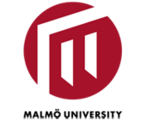Interaction Design (Two Years)

Interaction Design at Malmö University
Į magistro studijų programas gali stoti visi, baigę universitetą arba besimokantys paskutiniame kurse. Studijos kurias baigei ar tebesimokai turi būti panašios krypties kaip ir tos, į kurias nori stoti, kadangi priėmimas yra paremtas ECTS kreditų suderinamumu.
ECTS kreditų išrašas– jei dar nesi baigęs universtiteto, būtina prisegti ECTS kreditų išrašą, kuriame būtų matyti, kokius dalykus Tu mokeisi bei kokius pažymius ir kiek kreditų už juos gavai. Jei siunti anketą paskutiniame kurse, diploma ir jo vertimą reikės prisegti vėliau, kai tik jį gausi. ĮSIDĖMĖK, Prie anketos būtinai turi prisegti dokumentą (anglų kalba), patvirtinantį, kad studijuojI ir šiais metais baigsi savo studijas. Dokumentas turi būti patvirtinas universiteto administracijos.
Bakalauro diplomas - Jei jau esi baigęs universitetą, išrašo nereikia, užtenka prie anketos prisegti savo Bakalauro diplomą.
DĖMESIO TIEMS, KURIE JAU TURI BAKALAURO DIPLOMĄ!
Jau baigę Bakalauro studijas ir norintys aplikuoti į Magistrantūros studijų programas Malmo universitete užpildytą Kastu anketą su visais reikiamais dokumentais gali atsiųsti iki SAUSIO 10 d. ĮSIDĖMĖKITE, kad Kastu anketoje jau turi būti įkeltas Bakalauro diplomas ir jo vertimas į anglų kalbą.
IELTS/TOEFL anglų kalbos sertifikatus privalote atsiųsti iki SAUSIO 28 D.
Atsakymo iš universiteto, ar esate priimtas, sulauksite jau Kovo viduryje!
Svarbu, jog anglų kalbos testo sertifikatą atsiųstum iki BIRŽELIO 17 d. Anglų kalbos žinias gali patvirtinti vienu iš šių būdų:
IELTS – 6.5(iš kiekvienos dalies ne mažiau nei 5.5).
TOEFL – 90 (rašymo dalies rezultatas privalo būti ne mažesnis nei 20. TOEFL testo rezultatai privalo būti nusiųsti tiesiogiai iš centro, kuriame laikei testą).
1. Degree of Bachelor or equivalent in subjects relevant for interaction design. Examples of relevant subjects include, but are not limited to: computer science,informatics, information systems, human-computer interaction, new media arts,fine arts, design (industrial, product, graphic, interaction), communication studies,media studies and cognitive science.
- Two work samples or portfolio pieces, to show your craft skills and your ability to execute. For each sample, we like you to explain briefly why you chose it and what you think it says. (If it is joint work, be sure to indicate your contributions clearly).
- Your response to a design assignment that you can download here The assignment is intended to test your sense of how to approach an interaction design situation; we are looking for your thoughts on process rather than product ideas.
- A letter of motivation, detailing why you chose to apply to the programme and what you aspire to doing upon graduation.
Students enter the programme with different kinds of expertise, from art and design to engineering and social sciences. Upon graduation, you will have built a strong understanding of how your particular skills play a role in interaction design and how they combine with other specialities of fellow designers.

